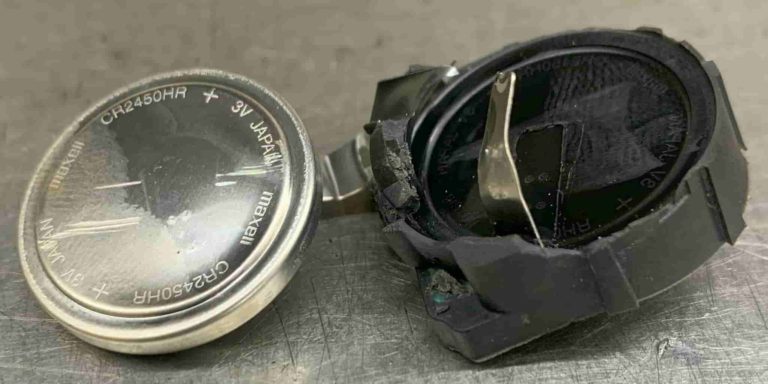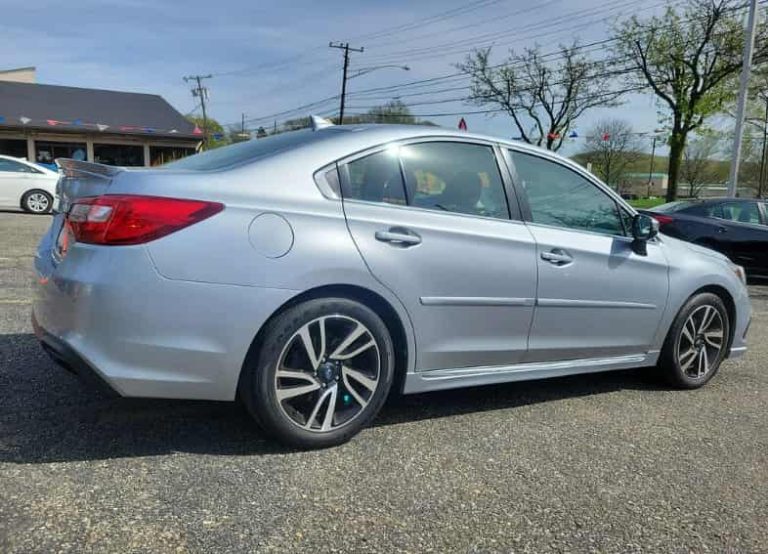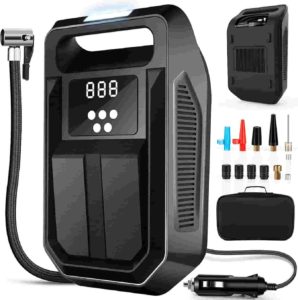What is the TPMS in a Subaru Legacy?
The tire pressure monitoring system (TPMS) in your Subaru Legacy is a built-in feature that tracks and alerts you if your tire pressure drops below a certain level. This system is crucial to ensuring safe driving conditions, as properly inflated tires enhance vehicle handling and fuel efficiency while minimizing tire wear. To check your current tire pressure: Find the 3 buttons “i/Set” with the up and down arrow on the bottom left of your steering wheel. Use the top or bottom arrow to scroll through a list of screens until you see the tire pressure screen.
Subaru Legacy Tire Pressure Light Reset Procedure
The Subaru Legacy does not have a tire pressure reset button.
When the tire pressure light on your dashboard turns on, pull over slowly and check your tire pressure right away.
Figure out which tire is low or high on air and adjust the tire pressure accordingly. (The TPMS lets you know which tire is low on your screen by displaying the low pressure value in yellow instead of white)
Fill your tires to the exact recommended pressures, accuracy is key. 33 Psi in the front, 32 Psi in the rear tires.
Drive your Subaru Legacy. Drive for 10 or 15 minutes at speeds over 20 Mph. This will reset the tire light.
If the light doesn’t go off right away, re-check your tire pressure to make sure they are all at the exact pressure you set them to. If they are down in pressure, you probably have some sort of tire leak.
What Tools Do You Need to Reset the Subaru Legacy Tire Light?
To reset the Tire Pressure Monitoring System (TPMS) on the Subaru Legacy, all you require is a reliable air pressure gauge. The reset mechanism is integrated within the Engine Control Unit (ECU) of the Subaru Legacy.
Other Options to Reset the Tire Light
If the tire pressures are at the exact pressure you set them to and the tire light still won’t go off, over fill your tires. We recommend filling your problem tire with 45 Psi or about 10 Psi over the recommended pressure. Sometimes this can wake up a sleeping sensor. With the tire overfilled, drive the car again for another 10 or 15 minutes. This will turn off the tire light. Now that the tire light is off, readjust the pressure back to the recommended Psi. Another option, if you followed all these steps and the light is still on, check your spare tire. Some Subaru Legacys (depending on the package you have) have a full size spare with a pressure sensor in them. Make sure your spare tire has the correct Psi. Now drive the car again. The last option, if nothing else seems to work is to disconnect the main 12 volt battery. Disconnect the negative battery terminal and wait a few minutes before reconnecting it. This will erase all the error codes in the Subaru Legacy computer including the tire pressure light error codes.
How Does the Subaru Legacy TPMS work?
The Tire Pressure Monitoring System (TPMS) in a Subaru Legacy is designed to monitor your tire pressure. This system works using sensors and a control unit that communicates with the car’s computer. Here is an in-depth explanation of how it operates:
Sensors: Each wheel of your Subaru Legacy has a TPMS sensor installed. These sensors are located on the valve stem inside the tire. They measure the pressure inside each tire in real-time.
Wireless Transmission: Each sensor is equipped with a radio transmitter. When the tire pressure changes, the sensor detects this change and sends a signal wirelessly to the TPMS control unit. This signal includes information about the tire pressure and the specific sensor (and therefore tire) from which it originates. Each sensor has a unique ID number.
Control Unit and Car’s Computer: The TPMS control unit, which is part of the car’s computer system, receives the signals from the sensors. It interprets the information and communicates with the car’s central computer system. If the pressure in any tire falls below the preset threshold, the computer triggers an alert.
Driver Notification: The alert activated by the car’s computer is the TPMS light on your car’s dashboard. This is the yellow exclamation mark inside the outline of a tire. When this light comes on, it means the system has detected low tire pressure in at least one of your tires.
Maintenance: TPMS sensors are powered by batteries, which have a limited life span. Usually lasting anywhere from 5-10 years. If the TPMS light flashes and then stays on, it usually indicates a dead or dying sensor battery.
Tire Pressure Sensor Batteries
Pressure sensor batteries are what power each tire pressure sensor. These batteries can’t be replaced. They look like wrist watch batteries and are attached to the sensor’s internal circuit board. This is why when the battery is out of power, the whole sensor needs to be replaced. How long the battery lasts can change depending on how you drive and the weather. But on average these batteries last between 5 and 10 years.
What is the TPMS Malfunction Indicator?
The Subaru Legacy’s tire pressure monitoring system also has a malfunction indicator to alert you when something is wrong with the system itself. This indicator uses the same yellow exclamation point as the low tire pressure light. The difference is that, if there is a problem with the system, the light will flash for approximately 60 seconds before staying on. This flashing or blinking will happen every time you start your car until the issue is resolved. When your tire light is flashing your Legacy will not be able to give you accurate pressure readings. Basically, a blinking tire pressure light means there is a malfunction within the TPMS itself, rather than an air pressure issue. This is usually due to a faulty pressure sensor in one of your tires (a dead battery) or driving with the spare tire. (if the spare doesn’t have a sensor in it) To figure out which sensor is malfunctioning or faulty, use a TPMS diagnostic tool and scan each sensor for diagnostic information.
What Can Cause a TPMS Malfunction?
Using non Subaru wheels.
Using non Subaru tire sizes.
If a window tint is installed, this can sometimes affect radio wave signals.
If there is lots of snow or ice on or around the tire valves.
If the tire pressure is extremely high.
If wheels without tire pressure sensors are installed on the car.
If new tire pressure sensors are installed without registering the new sensor IDs with the Legacy’s receiver module/ECU.
What Can Cause the Tire Pressure Light to Come On?
Seasonal temperature changes: A drop in ambient temperature can cause tire pressure to decrease, triggering the warning light.
Tire puncture or leak: A sharp object or road debris like a nail or screw may puncture a tire, causing air loss which will of course activate the warning light.
Faulty tire pressure sensor: Damaged or malfunctioning sensors may provide inaccurate readings, resulting in a false alert. The only way to determine which sensor is faulty is to scan each sensor with a TPMS diagnostic tool.
Spare Tire: Driving with the spare tire or donut on your Legacy will make your tire light turn on.
Valve stem issues: A damaged or leaking valve stem can lead to gradual pressure loss and eventual activation of the tire pressure light. They make kits to replace the rubber gasket that usually goes bad.
Tire damage: Impact from potholes or hitting a curb can cause structural damage like tire bubbles, leading to pressure loss.
Sensor battery life: TPMS sensors are battery-powered, and over time, batteries die.This will cause the tire pressure light to turn on. Again, you must use a diagnostic tool to determine which sensor is dead or dying.
Recent tire rotation or replacement: If the tires have been recently rotated or replaced, the TPMS may need recalibration to avoid false alerts. Sometimes the vehicle’s computer may think the front tires are in the rear and rear in the front after a rotation.
Wheel or rim issues: Damaged, corroded, or cracked wheels or rims can lead to air leaks and pressure loss. This is very common with low profile tires.
Altitude changes: Climbing or descending in elevation can affect tire pressure and trigger the TPMS warning. An additional 1.5 Psi per Km above sea level is required.
Natural pressure loss: Tires lose air pressure over time due to temperature changes and permeation. Tire dry-rot will happen to tires that sit.
Electrical problems or software issues within the car’s TPMS system. Occasionally the system may have a software update from Subaru.
Snow Tires: If you have a separate set of wheels/rims for snow tires, either swap over the sensors from your summer wheels or purchase a second set of 4 sensors for the second set of wheels/rims. If you are using one set of wheels for both sets of tires, do not worry about this.
Is it Safe to Drive With the Tire Light On?
We strongly suggest not driving your Legay if the tire pressure warning light is on. It’s important to find out why the light is on. Maybe there’s something like a nail stuck in your tire? Is the tire losing air? Is the tire losing air fast or slowly? Knowing the exact problem is the only sure way to know if it’s safe to drive and for how long.
Tire Leaks and Solutions
How to Find a Tire leak
To find a tire leak, check the air in each tire to find the one that’s low. Next, put air in the low tire because this can’t be done if the tire is all the way flat. After that, put some soap and water (or Windex) in a spray bottle and spray it all over the tire. Pay extra attention to the part where the tire touches the rim and the valve stem. Make sure the whole tire gets wet. Wait a bit then look closely at the tire for any small bubbles. If there’s a leak and you’ve sprayed the tire with soapy water, the air coming out of the tire will cause little bubbles where the leak is. If the tire is losing air, there’s a leak somewhere so keep looking until you find it!
Are Tire Plugs Safe?
Yes, tire plugs are an extremely reliable way to fix a tire puncture! I’ve used them hundreds of times while working at tire shops. They’re made to fix holes in the tread part of the tire that are made by things like nails or screws. Tire plugs are made from strong rubber like materials and they can handle big changes in pressure and temperature inside the tire. If you put it in right, a tire plug can last as long as the tire does. But remember, don’t use them to fix the sidewall of a tire.
Are Tire Sealants Safe to Use?
Tire sealants can be a quick fix for a flat tire in emergencies, but they’re not for long-term use. They can destroy your tire pressure sensors and can even hurt the tire itself. This is because you’re basically putting liquid in your tire. It can cause an imbalance within the tire and cause your steering wheel to vibrate when you’re driving. For these reasons we strongly suggest only using tire sealants if you really have to. If you do use one, take your car to a tire shop as soon as you can.
What Happens When Tires are Underinflated or Overinflated?
Underinflated Tires:
Decreased fuel efficiency: When tires are underinflated, your Legacy uses more energy to move, which reduces fuel efficiency.
Increased tire wear: Underinflation results in uneven tire tread wear, particularly along the edges of the tread. This shortens the life of the tires.
Poor handling: Underinflated tires can affect your vehicle’s responsiveness, making it harder to steer, especially at high speeds or when the roads are wet.
Overheating: Low tire pressure can lead to increased friction and heat, which can result in tire failure.
Higher risk of tire damage: Underinflated tires are more susceptible to damage from potholes and other road hazards.
Overinflated Tires:
Reduced traction: Overinflated tires have less contact with the road, which can reduce grip and traction.
Harsh ride: Overinflation can lead to a less comfortable ride as the tires are harder and less able to absorb the impact of bumps and imperfections of the road.
Increased wear in the center: Overinflation causes tires to bulge in the middle, leading to increased tread wear in the center of the tire.
Greater risk of tire damage: Overinflated tires are more prone to being punctured from things like nails and screws in the road.
Less predictable handling: Overinflation can make your vehicle’s handling less predictable, particularly in corners or when performing evasive maneuvers.
How Does The Weather Affect Tire Pressure?
Weather conditions can have a significant impact on your tire pressure due to the principle that air contracts when cold and expands when hot. In colder weather the air inside your tires will contract, causing the tire pressure to decrease. This is why you might notice your tire pressure warning light comes on during the winter or on particularly chilly mornings. Conversely, in hot weather, the air inside your tires will expand, which will lead to overinflation. A general rule of thumb is that for every drop of 10 degrees Fahrenheit, your tire pressure will decrease by about 1 Psi. This fluctuation is why it’s important to regularly check your tire pressure throughout the year, especially when there are dramatic shifts in the weather!
How to Adjust Tire Pressure
Get a high-quality tire gauge.
Make sure to check the tire pressure when the tires are cold. “Cold” means your vehicle has been sitting for at least three hours or driven less than 1 mile in the past 3 hours.
Take off the valve cap from the tire valve stem.
Push the tire gauge firmly onto the valve to measure the pressure.
Compare the pressure reading with the recommended pressure on the tire information label.
If the pressure is lower than the recommended pressure, add air.
If the pressure is too high, let out some air by pressing the metal stem in the center of the tire valve. You can use any object like a screwdriver to do this. Be gentle.
Recheck the tire pressure with the gauge.
Don’t forget to put the valve caps back on to prevent leaks and keep dirt and moisture out.
2023 Subaru Legacy Tire Pressure
TIRE SIZE | FRONT PSI | REAR PSI |
225/50R18 | 33 | 32 |
225/55R17 | 33 | 32 |
SPARE TIRE | 60 | 60 |
When Should You Adjust Tire Pressure?
To get an accurate measure on your Subaru Legacy’s tire pressure, check it when the car hasn’t been used for some time, such as in the morning. (Ideally, it should be parked for about 3 hours, this is referred to as “cold pressure”.) Tires warm up and the air inside increases when you drive, leading to misleadingly high readings. Therefore, don’t adjust the tire pressure right after driving, you’ll end up overinflating your tires!
Why is My Tire Light On But My Tires Look Okay?
Your tire light might be on for a few reasons. Even if your tires look okay, they might not have the right amount of air. Check the air in all 4 tires including the spare to be sure. If they’re okay, did the weather change a lot recently? Does the light go off when you add air but come back on when you drive? If so, there’s probably a leak somewhere. If the tires have the right amount of air and aren’t losing air but the light is still on, one of your tire pressure sensors batteries is dead or dying.
TPMS Legal Considerations
Is it the Law to Have TPMS Sensors?
In many places around the world like the United States and Europe cars must have tire pressure monitoring system sensors. The TREAD Act, a US law passed in 2000 says all cars made after September 2007 need to have a TPMS. This law is for car manufacturers, not drivers and its goal is to make driving safer by letting drivers know if their tire pressure changes. Similarly since November 2012 rules in Europe say all new cars must have a TPMS. These laws are there to help prevent accidents caused by tire problems.
Will My Subaru Pass Inspection With the Tire Light On?
Yes. In most states your car can still pass its safety check even if the tire pressure light is on. The rules can be different in different states. For example, in New York and Texas the tire pressure system is checked but your car won’t fail if it’s not working or the tire light is on. As a licensed inspector in New Jersey the tire pressure light is not a factor when passing or failing a passenger vehicle in a New Jersey State inspection. But commercial vehicles are different – they still need to pass “safety inspections”. Since the rules are different in each state you should check with your local Department of Motor Vehicles or similar agency to get the right information for where you live.
Conclusion
Maintaining correct tire pressure is not just a recommendation, it’s a necessity for your Subaru Legacy’s safety, performance, and efficiency. From seasonal weather changes to simple wear and tear, various factors can impact your tire pressure, triggering your dashboard warning light. So, stay on top of your tire maintenance and make sure to follow our guide if your tire light comes on. Happy and safe driving! Everything in this article is applicable to all Subaru Legacy models and trims. Including, Legacy Base, Premium, Limited, Sport, and Touring XT.
Please note that this blog post contains Amazon affiliate links. This means that if you make a purchase through one of these links, we at TPMSRESET.com may earn a small commission at no extra cost to you. We only recommend products that we personally use and believe in. Thank you for supporting us.





